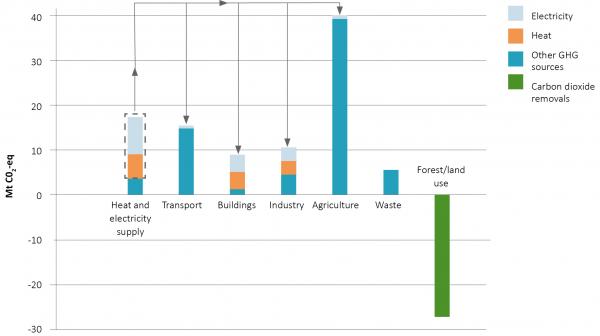New Zealand's emissions and trends
New Zealand’s annual gross GHG emissions are continuing to increase. Our net emissions, after taking into account removal of CO2 from the atmosphere by our forests as they grow, have also risen. Neither gross nor net emissions are expected to decline significantly within at least the next two decades based on current policies.
The main sources of CO2 emissions are from heat and electricity supply, transport fuels, cement manufacture and forest harvesting. New Zealand also produces an unusually large portion of methane (CH4) and nitrous oxide (N2O) emissions due to the significant role of agriculture in our economy. This accounts for around half of our gross annual GHG emissions.
Emissions of CO2 per capita are not as high as for many other developed countries but, in contrast to many, have increased slightly since 1990. However, because of our unusually large proportion of CH4 and N2O emissions, our annual emissions of total GHGs per capita are well above the average for developed countries, though they have fallen since 2005.
In pictures

Annual greenhouse gas emissions and removals in New Zealand are shown from each sector in 2013, with emissions from the heat and electricity supply sector allocated to the transport, buildings, industry and agriculture end-user sectors to avoid double counting. Source: MfE
Read the summary
- New Zealand’s emissions and trends, p8
Read the report
New Zealand’s emissions and trends, p40
- Historical trends
- Targets and policies
- Future trends
- New Zealand’s emissions and trends in a global context
